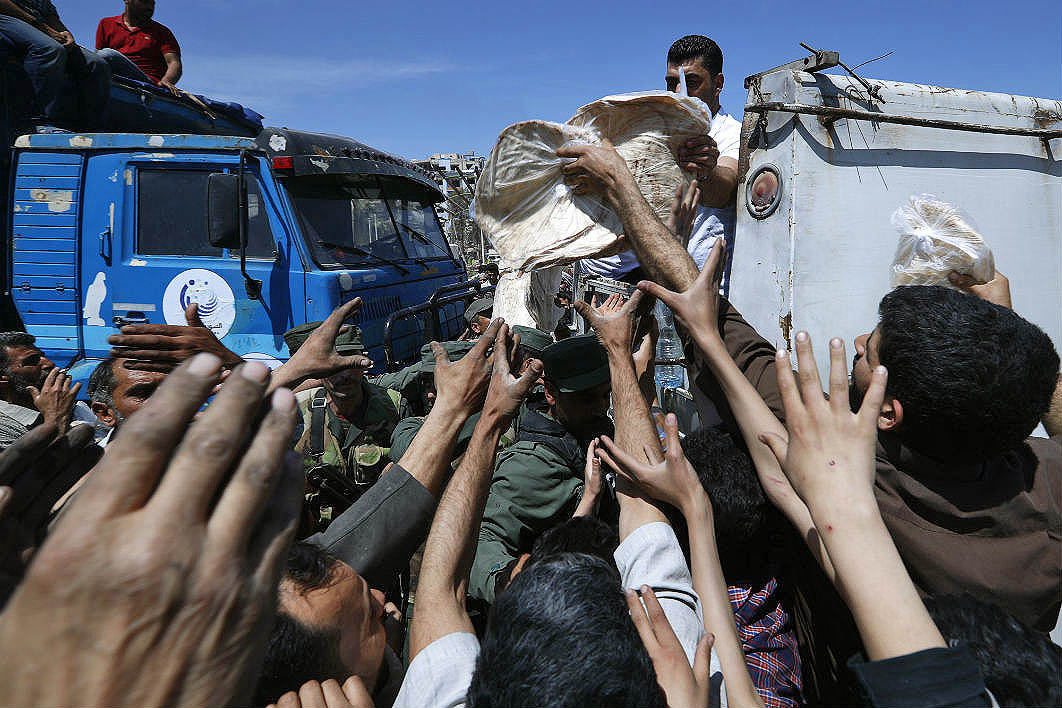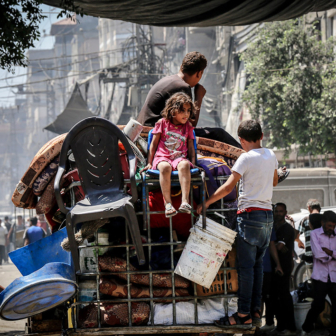Amid the impossible complexity of the Syrian conflict, is it wise to select one strand and use it to find a dominant pattern? The sight of children struggling for their last breath understandably evokes a strong response, but viewed among the devastation wrought by seven years of fighting — including around 400,000 deaths — does it justify an intervention of the kind we saw at the weekend?
It’s nearly six years since a Syrian official confirmed what had long been suspected or assumed — that Syria possessed chemical weapons. But Syria wouldn’t use those weapons against its own people, he claimed; they were reserved for responding to external aggression.
Yet sporadic reports of chemical weapons use were emerging from Homs and outside Aleppo, and they attracted condemnation from Western leaders citing the century-long effort to ban their use. Concerns intensified in August 2013 when evidence emerged that chemicals were being delivered by rockets aimed at opposition territory in the satellite towns around Damascus in the Eastern Ghouta. With around 1400 deaths reported, the issue jumped to the top of the list of horrors unleashed during the Syrian conflict.
At a press conference during a visit to Stockholm the following month, US president Barack Obama appeared to assert that the use of chemical weapons had crossed a “red line.” He was probably referring to a red line long observed by the international community rather than a red line drawn by one nation — the United States, for instance — acting alone. In fact, the international outcry after the Ghouta attack was so strong that the Russians and even the Syrian authorities seemed to accept that a threshold had been reached.
Syria announced that it would do three things: join the Chemical Weapons Convention, the international mechanism to counter the use of chemical weapons; agree to allow a team from the Organisation for the Prohibition of Chemical Weapons, or OPCW, to inspect its facilities; and abide by the inspectors’ findings by dismantling the network of production and storage facilities. Russia stepped in as co-sponsor of the process of dismantling and destruction, which was carried out over the period October 2013 to January 2016. It was an unprecedented achievement with massive technical support from many countries.
So far, the sequence of events resembled a textbook case of the international system working as it should — working, for example, like the methodical and consensual process that oversaw the dismantling of South Africa’s small nuclear arsenal in the 1990s under the auspices of the International Atomic Energy Agency.
What went so wrong since then? Why is Russia now seen as part of the problem, not of the solution? It’s convenient, of course, to blame Obama. He flagged a red line and then failed to enforce it, didn’t he?
Well, not exactly. He could have sent in the Tomahawks straight away, and taken out the network of chemical-weapon facilities in Syria. But he seized another opportunity — to wrestle the Russians into agreeing that chemical warfare was a no-go area, and should be recognised as such by all warring powers. His strategy, in other words, was to get Moscow to sign up the Syrians to the international mechanisms and then take the process to its conclusion. It was an opportunity no reasonable leader could pass up, particularly when both British and American legislators were not keen to get involved in the Syrian war.
Nowadays, though, almost every media commentator sees Obama’s strategy as shilly-shallying rather than statesmanship. What changed?
We have passed two more landmarks in the blatant use of chemical weapons to hasten an end to a prolonged war: the attack in Khan Sheikhun in April 2017 and, this month, the unleashing of chlorine and possibly sarin on Douma in the Eastern Ghouta. Though the death toll may only represent a fraction of the carnage wrought in the 2013 attack, these attacks look like a deliberate flouting of the Chemical Weapons Convention/OPCW framework, or the use of material that slipped through the earlier dragnet, or both.
An international response was clearly warranted, but it needed to be carefully linked to a strategy. As British prime minister Theresa May has noted, it is essential to ring-fence chemical weapons from the modern practice of war. This is not because chemical warfare has brought slaughter on a massive new scale — not yet, anyway. But it could so easily be adopted widely as a weapon of choice for parties able to harness the relatively small-scale technology and resources involved, especially in contests where no side seems able to gain a commanding advantage through conventional firepower.
There is also a shock value in highlighting the risk of resorting to chemical weapons. Ideally, the response should come through mechanisms such as the OPCW and the Chemical Weapons Convention. It is clear that the century-old consensus — Obama’s red line — needs reinforcing, but it would best be accompanied by efforts to strengthen rather than marginalise the international mechanisms.
Chemical warfare is only a small part of the disaster that has overwhelmed Syria but it shouldn’t overwhelm the need to deal with the fact that Russia, Turkey, Iran and the United States are fighting proxy wars within the wider conflict. Unless those wars are dealt with, the next horror could be the unleashing of chemical weapons on the hundreds of thousands of opposition members dumped in Idlib Province as part of the country’s “deconfliction” agreements — a target likely to be more difficult to overwhelm than Aleppo or the Eastern Ghouta. •




